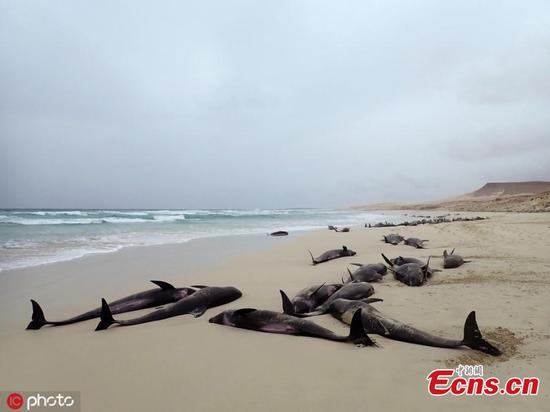The U.S. space agency NASA's planet-hunting Transiting Exoplanet Survey Satellite (TESS) have observed the rarely-seen aftermath of a star that was violently ripped apart by a supermassive black hole.
The study published in this week's Astrophysical Journal described the tidal disruption event around 375 million light-years away. The event tends to occur when a star gets too close to a supermassive black hole and the black hole's forces overwhelm the star's gravity and tear it to shreds.
Some of its material gets flung out into space and the rest falls back into the black hole, forming a disk of hot, bright gas as it is consumed, according to the researchers.
The disruption occurred in TESS's southern continuous viewing zone, allowing the space telescope and other follow-up observations to record the whole process of the cannibalism. TESS's extremely wide field-of-view and continuous coverage make it a great tool for detecting and monitoring the event.
By observing the light given off during this process, which increases to a peak brightness and then tapers off, astronomers can better understand the physics of the black hole and the forces behind the phenomena.
Then, they used UV data from Swift Observatory, NASA's another space telescope, to determine that the temperature dropped by about 50 percent, from 40,000 to 20,000 degrees Celsius, over a few days.
It's the first time such an early temperature decrease has been seen in a tidal disruption before, according to the study.
Astronomers estimated the supermassive black hole that generated the event weighs around 6 million times the sun's mass. It sits at the center of a galaxy in the constellation Volans. The destroyed star may have been similar in size to the sun.
Tidal disruptions occur once every 10,000 to 100,000 years in a galaxy the size of Milky Way. Astronomers have observed only about 40 tidal disruptions so far, and scientists predicted TESS would see only one or two in its initial two-year mission.
The event is unique since its host galaxy is younger and more dust-filled than previously observed events, according to the study.
TESS, launched in April 2018, is NASA's second spacecraft after Kepler Space Telescope in the search for planets outside our solar system, including those that could support life.


















































